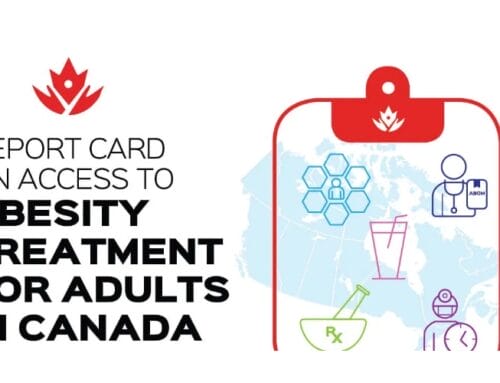Dr. Vera Tarman, a food addictions specialist and author of the book Food Junkies, answers more of your questions in the latest installment of our popular series. Read Part 1 of Dr. Tarman’s Q&A here.
Q1: I convinced myself that I have a food addiction problem and went abstinent from sugar and flour for almost five months. Everything was great, and I was very open about what I was doing with family and friends and co-workers. Some were supportive and others were not, but I was comfortable and happy.
Fast forward several months and I have relapsed and am now very afraid to dive head first into abstinence again with all the “I told you so” attitudes I will get from the people around me. If I could do it all over again, I would have just put my head down and shut my mouth about what and why I was eating, because then I wouldn’t feel the shame of failure I do now. Do you have any advice for people to deal with the social aspects of recovery?
What a great question! The top offenders for any relapse are:
1) The addicted mind, which will badger the user into using (sometimes for pleasure or comfort, but also, if the addiction is advanced enough, just to keep the mental chatter down).
2) The social support system. If your friends, family and external environment do not support your sobriety by helping you to avoid triggering people, places and circumstances, chances are they are supporting the grounds for your relapse. How many times have I heard a person who has relapsed say that they could not refuse the family member who said, “Just have one cookie”, or subtle criticisms such as “you are still following that diet?”
Humans are social creatures. We need social approval to feel comfortable and safe. While it is possible to hold your ground in the short term, the trial and tension of withstanding an unpopular or unusual position can be very stressful, and it is not a sign of weakness if you give in to social or peer pressures. It is an inevitable response to wanting to be a peace with your fellow humans.
One addiction tool that honors the biological imperative to be socially congruent is simply to accept this reality. I tell all my patients, food, alcohol or cocaine addicted, you must control your social environment if you want to achieve contented sobriety. Remember how hard it was to quit smoking when everyone else smoked and offered you a cigarette? Now, that there are fewer smokers, people are finding it easier to stop and stay stopped. We call this attending to the cues of people, places and things. Or, “sticking with the winners”.
This may mean that you can no longer go to your favourite buffet or a late-night dinner party. You may need to plan ahead to manage your triggers if you do attend an eating event (i.e., tell people that you are following a specific food plan and that you need their support to stick with it).
Relapses are usually due to lack of planning or simply ignorance about how difficult managing sugar / food addiction can be.
It is truly unfortunate that the public, even medical clinicians, are often dismissive of sugar’s powerful lure. The more respect we have for this powerful drug, the more we realize how easy is to relapse, especially if you are doing it alone or in the face of another’s objections.
Don’t “put your head down and shut your mouth.” That does not work either. Recovery from addiction does not work in isolation. Healing is best done in the social context. Hence, stick with the winners! They are the people who are doing what you want or who will support you. Remember the adage that “the opposite of addiction is connection.”
Q2: I understand why sugar is so addictive and that removing sugar from your diet reduces that craving, however just one cookie and one is back in the addiction again. Is there a plan, such as with drug addictions, to remove these food addictions from one’s life? Secondly why is there not regulation to remove the more addictive nature of foods in restaurants and why is it necessary for many restaurants to load up on simple carbs in each serving?
There are a number of food plans that are suitable for food addiction in recovery. I usually state that the best approach is to simply avoid processed foods. Refined industrial food products have been designed to sell, which often means that they are engineered to become enticing, alluring, even addicting. And they do become addictive to a subset of the population – those vulnerable to addiction.
Many current food fads, such as keto or Paleo, offer food plans which avoid simple carbs, such as sugar and flour. They are great for food addiction. Beware, I do worry that some of their plans include refined processed products that can be addictive.
In the addiction model, stopping the drug itself is only the first step. In order to avoid the relapses that may occur because of psychological issues such as depression, anxiety, trauma, or social/peer pressures, a significant amount of relapse prevention is important to maintain sobriety. This can mean anything from mindfulness, cognitive therapy, exercise and, of course, a strong social network that supports food sobriety.
Support groups such as Overeaters Anonymous, Food Addicts Anonymous or Grey Sheet Anonymous offer an abstinent food plan, but these usually are presented with a sponsor or food buddy or the support group itself, to help the person navigate not only their new food plan but their new abstinent life. It acknowledges that the food plan alone is only a diet without the appropriate support to make it sustainable.
Why are there not regulations to remove the addictive ingredients in food? Why push for the abundance of simple carbs like rice, pasta and bread in restaurants? When I started in the field of food addiction, I was interested in helping people who struggle with food/eating issues and wanted to share the successes I found with the addiction approach. However, I have become politicized by the keen awareness that the major problem of disordered eating and the obesity crisis is the processed food we eat today as well as the types of food we encourage people to eat, i.e., pastas, breads and grains that overload our restaurant fare.
In the addiction world, we call this food the “cheap and cheerful food.” It sells. The food industry has an enormous investment to sell, regardless of the mental and physical consequences of their products. It is a business first, not a nutritional service.
Furthermore, Big Food is complicit in supporting our educational, clinical and entertainment environments to stay exactly the same. We train our dietitians to encourage moderation of sugar or flour or grains. Our protest, in the form of educational health lectures, regulations to curb dangerous ingredients and warnings about the costs of diabetes, obesity and arthritis are but slingshot residue to the Big Food Goliath.
However, we did turn the tide of the tobacco industry. We are slowly grinding down the opioid mammoth. The people are speaking, and we have the power to NOT buy or eat these products, and instead eat the “real food” of our ancestors. It is heartening to know that David does win in the end.
Q3: The more I know about addiction, especially in women, the more I realize I am not alone in experiencing emotional trauma as a child. Raised by parents unable to meet my emotional needs left a void that food (sugar) addiction was able to fill for many years. How important is getting “outside” help for past trauma and when do you recommend getting this help once the journey of recovery has begun?
While food addicts may have a history of trauma, and emotional distress can certainly lead to a binge, therapy to resolve psychological crisis is not the first essential step. Food addiction is premised on the fact that the patient has a disordered neurobiological/chemical reaction to specific foods that have entered their body. It is that simple.
Certainly, a difficult and traumatic past will predispose an individual to addiction, but it is the food itself that is the ultimate trigger to the cascade of problematic eating behavior. A food addict can eat whether they are happy, sad, tired or enthusiastic. There are many people suffering from addiction, food included, who have no history of trauma.
Abstinence from the triggering food is the essential first step. But it is only the first step. In order to maintain long term sobriety, and long-term weight loss, a number of relapse prevention tools must be put into place. Dealing with trauma, learning how to establish clear food boundaries, treating insomnia and other mental health issues are all crucial, as these can undermine the serenity necessary to sustain sobriety. Thus, they are the second step (or in the 12-step program, the rest of the steps, and are a necessary part of the maintenance plan.
Q4: Since I gave up my chocolate/candy habit I think my bread intake has tripled. \I am having a really bad time with bread. For over three months now, I have stopped eating candy, don’t drink sugar-sweetened or alcoholic beverages, have reduced sugar intake by changing my food and have increased physical activity. Is it possible that bread is sabotaging or neutralizing all the other steps?
Michael Pollen once said that, “Bread is solid beer and beer is liquid bread”. Following the glycemic index, which is a measure of how quickly a carbohydrate will break down into its sugar components, there is not a great deal of difference between bread and sugar… and indeed, beer.
Many people claim that quitting bread is more difficult than quitting sugar. Witness the numbers of people who claim that they prefer the savory over the sweet. But truthfully, what is the difference?
Bread, sugar, beer are all very close to each other on the glycemic index. In fact, bread is actually higher than sugar on the glycemic index. It is no surprise that the direct hit of sugar can be replaced by the slightly diluted version of sugar that is bread. If sugar is your trigger, you can bet that bread will be as well. You just need to eat three slices of it to equal one candy bar.
Although you have done many helpful actions to support your sobriety like quitting overt sugar and alcohol, and exercising more, the bread is indeed the culprit. It is like drinking wine instead of hard liquor – you need more to get to the same happy place, only to be craving more bread very soon again.
The opinions expressed in Ask the Expert are those of the profiled expert, and not necessarily those of Obesity Canada. Content does not constitute medical advice.






